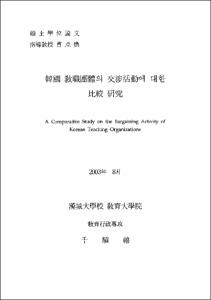韓國 敎職團體의 交涉活動에 대한 比較 硏究
= (A) comparative study on the bargaining activity of Korean teaching organizations
- Files in This Item:
-
-
Download
 000000066423.pdf
기타 데이터 / 4.29 MB / Adobe PDF
000000066423.pdf
기타 데이터 / 4.29 MB / Adobe PDF
-
Items in Repository are protected by copyright, with all rights reserved, unless otherwise indicated.